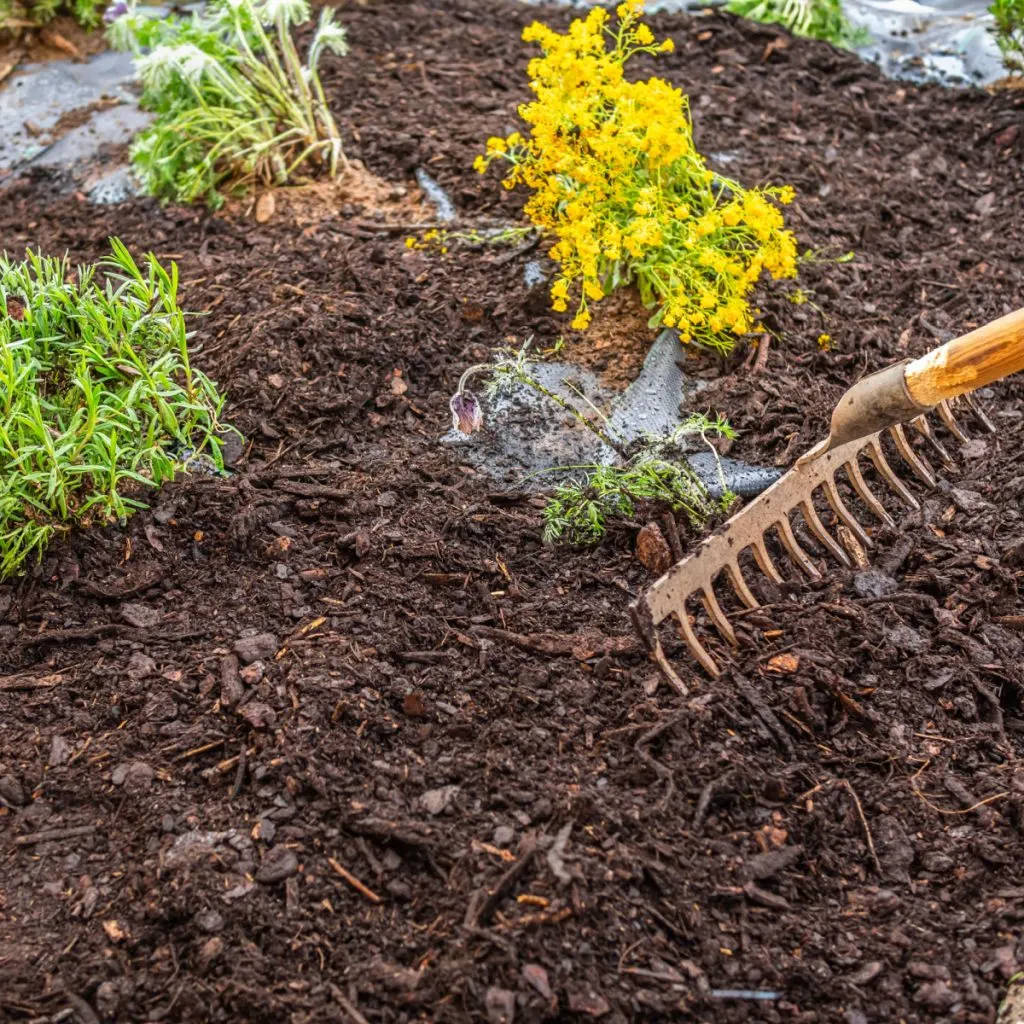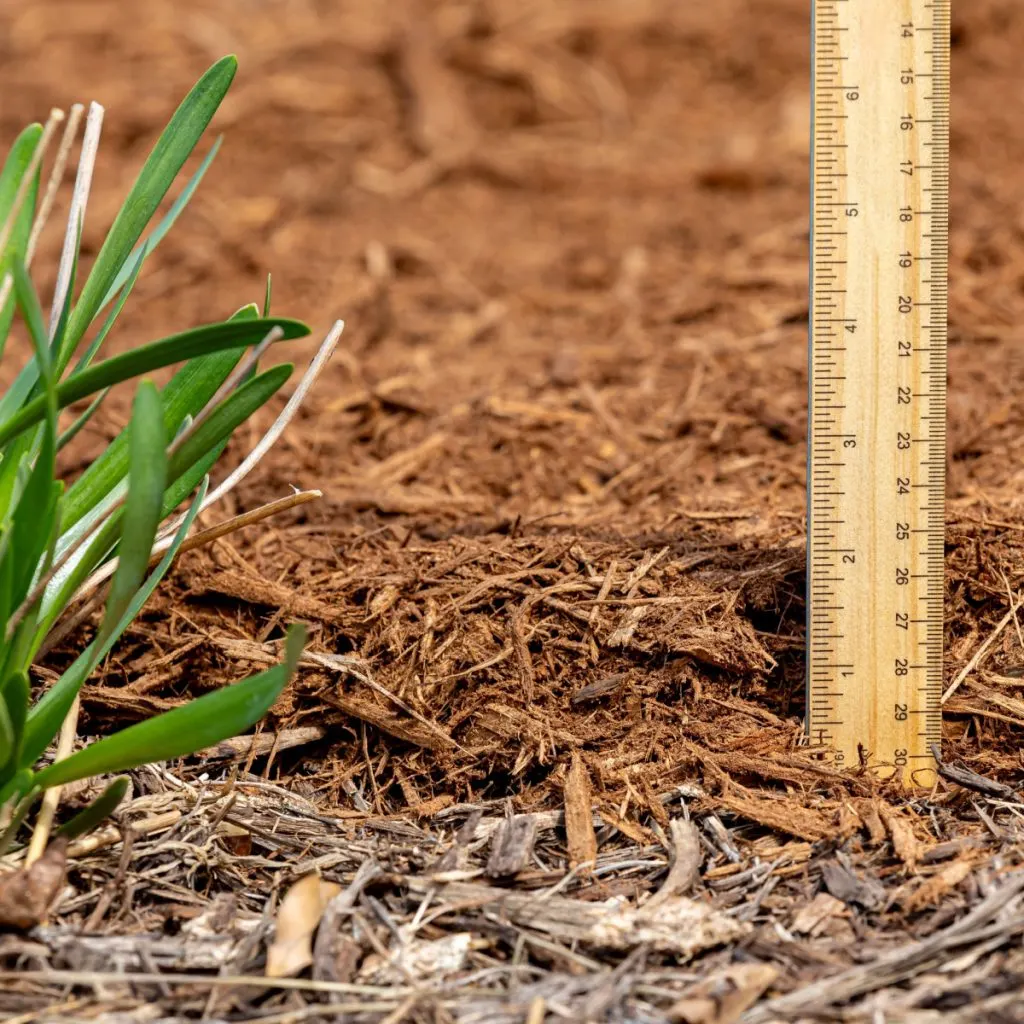Whether mulching your flowerbeds or your garden, there are three simple secrets that can make a huge difference in how effective your mulch can be in preventing weeds – and in just how much time you will be wasting this year weeding and re-weeding your beds!
If there is one topic we receive more emails on than any other – it’s weeds. Or more to the point, how to stop them. There is nothing worse than spending hours in your flowerbeds in the spring mulching – only to be right back out in your beds a few weeks later battling weeds. Especially when that battle continues to rage on for the rest of the summer.
But it truly doesn’t have to be that way! There is little doubt that a good layer of mulch can do wonders for keeping weeds to a minimum. But by simply implementing a few easy strategies into your mulching efforts, you can do more than keep weeds to a minimum – you can actually eliminate them for the entire summer!

The Benefits Of A Good Layer Of Mulch – 3 Simple Secrets To Mulching Flowerbeds
A good layer of mulch is so important to your plants. In addition to weed control, mulch plays a huge role in the health and vitality of the plants that grow in your flowerbeds.
By covering the soil, mulch helps to hold valuable moisture deep in the soil, right where it is needed most near the roots of plants. In addition, it also helps to insulate the roots from both extremely cold and overly warm temperatures.
But the type of mulch used, along with when and how it placed down plays a huge factor in just how successful it can be. And by simply following the 3 basic tasks below when mulching, you can once and for all end your battle with weeds this year!
3 Simple Secrets To Mulching Flowerbeds
#1 Mulch Deep!
One thing is for certain, an inch or two of mulch in your flowerbeds is never enough to do the job. It’s not enough to keep weeds from finding a way to your soil. Nor is it thick enough to insulate plants or retain moisture.
To be truly effective, mulch needs to be placed at least four inches thick in beds. Six inches is even better! At that thickness, the mulch is hefty enough to be an excellent barrier for weed seeds. It also can protect the soil and keep it from drying out in the hot summer sun.
It may cost a bit more and take a bit more effort to place a thicker layer of mulch, but you will be rewarded with fewer weeds and far less weeding chores all summer. If there is one culprit to allowing weeds to take hold more than any other – it is too thin of a layer of mulch. And right behind that, it’s using the wrong type of mulch.
Use The Right Type Of Mulch – 3 Simple Secrets To Mulching Flowerbeds
There has been a big push in the landscaping industry over the last decade to produce mulch that is super fine. Often called triple shredded or ultra-fine shredded mulch, these mulches actually are not the best choice for flowerbeds.
Unfortunately, although they may look great when they first go down, ultra-fine mulches are incredibly poor at stopping and preventing weeds. Even worse, they are also quite ineffective for insulating the soil and retaining moisture for plants.
Super fine mulch is often closer to soil than it is true mulch. The product is made by continually passing the chosen material through a shredder. With each succeeding pass, the mulch becomes more finely ground.
Listen In Below To Our Podcast On Stopping Weeds!
Yes, it is easier to spread. And the soil-like “look” can be quite beautiful in flowerbeds. Well, that is, until the weeds take over in quick fashion. Ultra shredded mulch is so fine that weed seeds can actually germinate right in it!
That means weed seeds that blow in or are brought into your flowerbeds by animals and birds can sprout with ease. Super fine mulch also disintegrates into the soil in quick fashion. And unfortunately, that leads to the need for more and more mulch, which can get quite expensive.
Best Mulch Choices – 3 Simple Secrets To Mulching Flowerbeds
So what is the best choice for mulch for helping plants and stopping weeds? It all starts with using single or double shredded products. These still have enough structure to both block weeds and insulate the soil. As for types of mulch – hardwood and hardwood bark are at the top of the list. They do all of the above perfectly well, all while adding valuable nutrients to the soil as they slowly break down.
For years, we have used single shredded hardwood bark mulch from a local sawmill. Not only is it incredibly inexpensive, it does a great job of keeping our flowerbeds healthy and weed free. Best of all – it lasts a long time!
Don’t Rake Or Turn Your Mulch! – 3 Simple Secrets To Mulching Flowerbeds
This little secret actually makes you work less! Raking and turning mulch over to “freshen” it up is one of the most common mulching mistakes of all. And can it ever lead to a vicious cycle of weeding and more weeding!
Although it may seem like a great way to spruce up your flowerbeds, existing mulch should never be disturbed. Mulch forms a protective barrier against weed seeds that find their way to your bed spaces. And as long as that barrier stays in place, the seeds cannot find the soil to sprout.
Unfortunately, when you rake or turn your mulch over, the seeds that were on top can quickly find a home below. Not only that, they then have a nice layer of mulch on top to help insulate and hold moisture to them – which just happens to be the perfect conditions needed for sprouting!
Never rake or turn existing mulch. Not in the early spring, or at any time throughout the season. If you are trying to freshen up the look of your beds, add a fresh, thin layer of mulch on top. This will keep the soil’s protective layer in tact, and keep weeds seeds from germinating.
Fill Those Flowerbeds! – 3 Simple Secrets To Mulching Flowerbeds
As a final tip on this note, always try to fill your flowerbeds with more plants than mulch. The thicker your plant canopy is, the less chance there will be for weeds and weed seeds to find a home. And even better, it means you have far less space to mulch! See: Dividing Perennials In The Summer – How To Fill Your Flowerbeds For Free!
Here is to mulching your flowerbeds for big success this year – and to stopping weeds forever! Happy Gardening, Jim and Mary.
Old World Garden
Jim and Mary Competti have been writing gardening, DIY and recipe articles and books for over 15 years from their 46 acre Ohio farm. The two are frequent speakers on all things gardening and love to travel in their spare time.
As always, feel free to email us at thefarm@owgarden.com with comments, questions, or to simply say hello! You can sign up for our free email list in the subscribe now box in the middle of this article. Follow us on Facebook here : OWG Facebook. This article may contain affiliate links.


